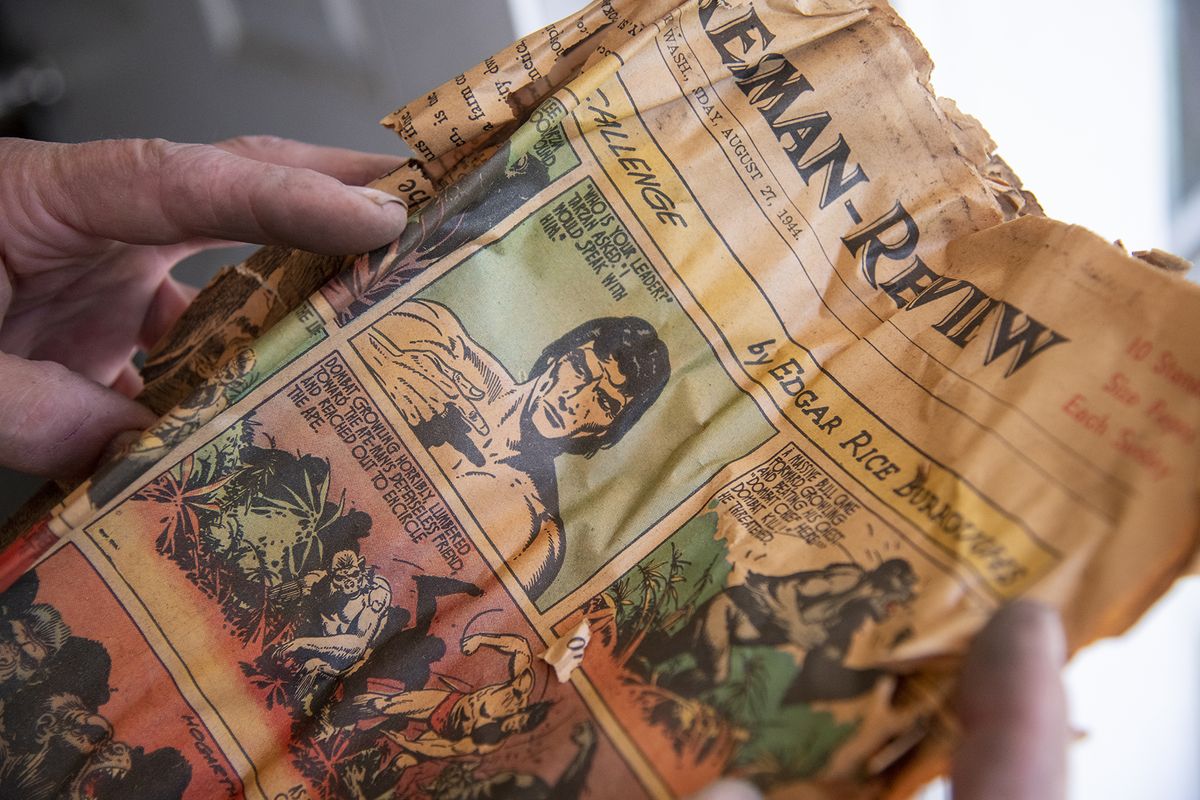Spokane house renovation unearths Spokesman-Review and Daily Chronicle newspapers nearly a century old

When Dan Coyle started removing old cast iron pipes at a house he rents out near Gonzaga University on Tuesday, he uncovered a piece of Spokane’s history he didn’t expect.
Wrapped around one of the pipes as a thrifty form of insulation was a copy of the Spokane Daily Chronicle dated May 25, 1923.
“Ninety-eight years to the day that they put the plumbing in, we tore it out,” Coyle said.
As workers kept removing pipes, they found more papers. Copies of the Chronicle and The Spokesman-Review from throughout the month of August 1944 show the steady progress of Allied troops against Nazi forces in the final months of World War II in Europe, along with weather forecasts and color comic strips by Edgar Rice Burroughs.
“Patriots’ army roars in Paris as U.S. steamroller smashes Nazis,” declares the Chronicle’s headline Aug. 22, 1944, atop a photo of a smiling Gen. George S. Patton.
Three days later: “Paris wild with joy as Yanks come: Nazis in northern France flee toward Rhine,” the Aug. 25 headline reads.
Three more days, Aug. 28: “Nazis retreat on all French fronts.”
The Aug. 30 issue of The Spokesman-Review offered a few snapshots of what was to come in the months and years ahead.
Below a headline reading “world security plans outlined,” an Associated Press dispatch from Washington, D.C., told of the early days of the Dumbarton Oaks Conference, where leaders from the United States, United Kingdom, Soviet Union and China laid the foundation for what would become the United Nations.
“The men who ought to know are confident that history’s first great airborne field army can hop right over Hitler’s boasted west wall,” a military analyst wrote in another story, previewing the Allied offensive on the Siegfried Line that began the following month.
That same day, a local story announced a planned cut in aluminum production at the Mead plant in Spokane, but aluminum wasn’t the only commodity in short supply during the war. Newspapers like the ones Coyle discovered were collected as part of the government’s “Salvage for Victory” campaign.
Coyle, who has owned the house since 2001, said he hasn’t been able to find records showing who owned it back in the 1940s – much less 98 years ago. Spokane County assessor record show the house was built in 1900.
In a hurry to finish the renovations before his new tenants arrive at the beginning of June, Coyle replaced the antique plumbing and left the rolled-up papers in a pile, but within hours they were falling apart.
“I don’t know enough chemistry to know why they’d be crumbling now when they weren’t five hours ago,” he said. “I’m mildly concerned about the well-being of these papers. I like old stuff.”